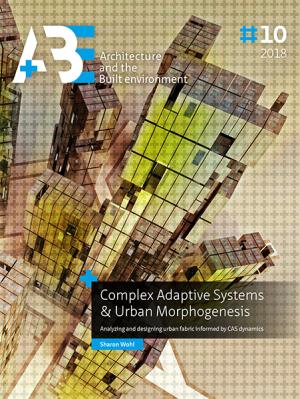Hosted by
Complex Adaptive Systems & Urban Morphogenesis: Analyzing and designing urban fabric informed by CAS dynamics
Synopsis
This thesis looks at how cities operate as Complex Adaptive Systems (CAS). It focuses on how certain characteristics of urban form can support an urban environment's capacity to self-organize, enabling emergent features to appear that, while unplanned, remain highly functional. The research is predicated on the notion that CAS processes operate across diverse domains: that they are ‘generalized' or ‘universal'. The goal of the dissertation is then to determine how such generalized principles might ‘play out' within the urban fabric. The main thrust of the work is to unpack how elements of the urban fabric might be considered as elements of a complex system and then identify how one might design these elements in a more deliberate manner, such that they hold a greater embedded capacity to respond to changing urban forces. The research is further predicated on the notion that, while such responses are both imbricated with, and stewarded by human actors, the specificities of the material characteristics themselves matter. Some forms of material environments hold greater intrinsic physical capacities (or affordances) to enact the kinds of dynamic processes observed in complex systems than others (and can, therefore, be designed with these affordances in mind). The primary research question is thus:
What physical and morphological conditions need to be in place within an urban environment in order for Complex Adaptive Systems dynamics arise - such that the physical components (or ‘building blocks') of the urban environment have an enhanced capacity to discover functional configurations in space and time as a response to unfolding contextual conditions?
To answer this question, the dissertation unfolds in a series of parts. It begins by attempting to distill the fundamental dynamics of a Complex Adaptive System. It does so by means of an extensive literature review that examines a variety of highly cited ‘defining principles' or ‘key attributes' of CAS. These are cross-referenced so as to extract common features and distilled down into six major principles that are considered as the generalized features of any complex system, regardless of domain. In addition, this section considers previous urban research that engages complexity principles in order to better position the distinctive perspective of this thesis. This rests primarily on the dissertation's focus on complex urban processes that occur by means of materially enabled in situ processes. Such processes have, it is argued, remained largely under-theorized. The opening section presents introductory examples of what might be meant by a ‘materially enabling' environment.
The core section of the research then undertakes a more detailed unpacking of how complex processes can be understood as having a morphological dimension. This section begins by discussing, in broad terms, the potential ‘phase space' of a physical environment and how this can be expanded or limited according to a variety of factors. Drawing insights from related inquiries in the field of Evolutionary Economic Geography, the research argues that, while emergent capacity is often explored in social, economic, or political terms, it is under-theorized in terms of the concrete physical sub-strata that can also act to ‘carry' or ‘moor' CAS dynamics. This theme is advanced in the next article, where a general framework for speaking about CAS within urban environments is introduced. This framework borrows from the terms for ‘imageability' that were popularized by Kevin Lynch: paths, edges, districts, landmarks, and nodes. These terms are typically associated with physical or ‘object-like features' of the urban environment — that is to say, their image. The terminology is then co-opted such that it makes reference not simply to physical attributes, but rather to the complex processes these attributes enable. To advance this argument, the article contrasts the static and ‘imageable' qualities of New Urbanism projects with the ‘unfolding' and dynamic qualities of complex systems - critiquing NU proponents as failing to appreciate the underlying forces that generate the environments they wish to emulate. Following this, the efficacy of the re-purposed ‘Lynchian' framework is tested using the case study of Istanbul's Grand Bazaar. Here, specific elements of the Bazaar's urban fabric are positioned as holding material agency that enables particular emergent spatial phenomena to manifest. In addition, comparisons are drawn between physical dynamics unfolding within the Bazaar's morphological setting (leading to emergent merchant districts) and parallel dynamics explored within Evolutionary Economic Geography).
The last section of the research extends this research to consider digitally augmented urban elements that hold an enhanced ability to receive and convey information. A series of speculative thought-experiments highlight how augmented urban entities could employ CAS dynamics to ‘solve for' different kinds of urban optimization scenarios, leading these material entities to self-organize (with their users) and discover fit regimes. The final paper flips the perspective, considering how, not only material agency, but also human agency is being augmented by new information processing technologies (smartphones), and how this can lead to new dances of agency that in turn generate novel emergent outcomes.
The dissertation is based on a compilation of articles that have, for the most part, been published in academic journals and all the research has been presented at peer-reviewed academic conferences. An introduction, conclusion, and explanatory transitions between sections are provided in order to clarify the narrative thread between the sections and the articles. Finally, a brief ‘coda' on the spatial dynamics afforded by Turkish Tea Gardens is offered.

